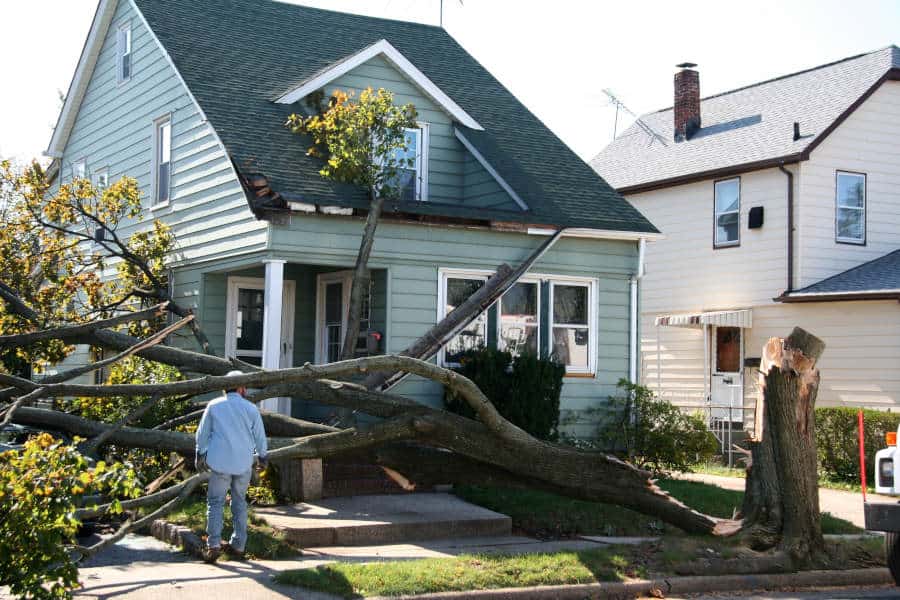Replacing a roof is one of the largest home improvement projects you can get into. The process is messy, expensive, and noisy. But, that roofing system up there is absolutely critical when it comes to protecting both your home, the investment wrapped up into it, and the special people inside.
Let’s face it…everything you own and love is under that roof!
Crucial Point – a proper roof replacement (which includes great ROI on the value of your home) requires gathering some basic knowledge prior to even contacting a potential roofing contractor for an estimate.
You need to know some industry terms and best practices so you can have meaningful conversations as you interview companies and see what your options are. That being said, let’s jump right into our straightforward guide to roof replacement.
Remember, this is an important project, so doing your homework isn’t optional.
Common Roof Materials
Selecting the proper roof material for your home and your budget begins with several factors:
- Roof Construction – Flat or Steep
- Climate – Wet or Dry
- Architecture
There are specialty roofing systems for flat or low-sloped roof structures, found on commercial buildings and homes with modern designs. “Low slope” systems are usually a single-ply membrane system over sheeted insulation.
Some examples of common roofing systems you see all around you on buildings in your area likely include:
- TPO: lower cost thermoplastic polyolefin used in single-ply roofing systems that offer resistance to UV, Ozone, and Chemical Exposure; heat-reflective and energy efficient.
- PVC: another single-ply roofing membrane made with polyvinyl chloride for high durability and high resistance spectrum; commercial-grade.
- EPDM: an extremely durable synthetic rubber roofing membrane used around the world; typically comes in black or white – the ultimate weather protectant.
- Modified Bitumen: asphalt-based and built for structures with low-sloped or flat roofs; offers five layers of protection.
The most common roof structure on residential buildings is a steep-pitched roof. Any sloped roof with a pitch greater than 4:12 is considered steep. This means there is 4 inches of elevation drop on the slope for every 12 inches of elevation run. This pitch can be calculated using a pitch gauge.
Popular steep slope systems (your average residential home) would include:
- Asphalt Shingles
- Wood Shake Shingles
- Clay or Ceramic Tile
- Standing Seam Metal
- Stone-coated Steel Shingles
Let’s take a quick second to take a closer look. We could create a very long and complex guide for each, so the goal here, again, is just to familiarize yourself. Obviously the more you know the better your decisions will be, but just know that this is where your research should begin – and in this order if you’re like most other homeowners.
We’ll look at them through the perspective of the Miami, FL area, because that’s where we’re located and who we serve as a Miami-only roofer.
- Asphalt shingles are relatively inexpensive and very common in most markets, especially Miami, FL. Most architectural dimensional shingles include a 50-year warranty from the manufacturer like GAF.
- Wood shakes or shingles are not common in the Miami, FL roofing market due to potential fire hazard. These roof systems are typically found in cooler, dyer regions.
- Clay or ceramic tile is not uncommon in the Miami roofing market. Tile roofs are heavy, and the overall structure of the house must be constructed to support the extra weight of the tile roof system. Because of this, tile roofs aren’t a common choice when replacing a roof.
- Metal roofs have become more popular in the Miami area recently because of their durability and fire rating. Metal roofs are more commonly found on commercial and municipal buildings, but they can certainly be installed on a residential roof. Check with your H.O.A. to see if a metal roof is an option.
- Stone coated steel shingles have made some progress in recent years. These systems are durable, attractive, and look enough like asphalt shingles to meet most H.O.A. requirements. There are some significant energy savings characteristics of these systems if they’re installed correctly.
Understanding The Basic Construction Process
Having a grasp of the roof replacement process will allow you to make informed choices when interviewing contractors.
The following are basic steps which most definitely shouldn’t be overlooked:
- Remove the entire roof system all the way down to the decking. You don’t want to see any felt paper, valley metal or drip edge remaining when the roof system has been removed.
- Repair all damaged decking. The manufacturer will require a “solid nailing surface” which means any rotten decking must go!
- Install valley protection directly to the decking. “Ice and water shield” is the preferred valley protection in the Miami market. This peel-and-stick material goes down right on top of the decking to provide a water-tight seal in a critical roof area.
- Install felt paper or underlayment. Common roofing felt is still an adequate deck protection material, but synthetic roofing felt is much more common in the Miami market.
- Protect all roof penetrations per building code and the manufacturer’s installation guidelines. These are critical potential leak areas which trip up most uneducated roofers. There is no licensing in the State of Texas (more to follow on that), so if your roofer hasn’t taken the time to brush up on best practices you could have a real problem on your hands.
- Strip-in all wall and apron flashing. Similar to roof penetrations, this is an area where many inexperienced roofers make mistakes. Wall flashing is a top-water entry point and must be addressed correctly.
- Install specialty start course and drip edge. This treatment at the eaves is critical in Miami where we experience wind-driven rain. Once again, this is an area where we see installation deficiencies. It’s important to get this process right.
- Now it’s time for shingles! These should be installed per manufacturer guidelines which most IRC codes refer to, making these guidelines THE LAW!
- Last comes the ventilation system. This is critical in allowing the attic space to breath. An improperly ventilated roof will wear exponentially faster, show signs of blistering, cause the decking to buckle, and possibly fail well before it should. Most roofing contractors don’t understand the nuances of ventilation. Improper ventilation is by far the most common issue in the roofing industry in Miami, Texas.
Selecting Your Miami Roofing Contractor
Alrighty then – it’s time to call some roofing contractors. You shivering with excitement? How will you decide which contractor is right for your project? It’s important to understand the entire roofing industry in Miami to be able to make an informed choice.
- No State Roofing License: The State of Texas doesn’t require roofers to be licensed. There is NO barrier to entry – literally anyone can be ‘a roofer’. This also means no State oversight, mandated training, or education standards. If your roofer didn’t take the time to study and learn their trade, then they’re going to potentially leave you with a disaster.
For example, they may not install your roof to local building code and manufacturer guidelines. This WILL cause a problem when you try to sell your home and a building inspector identifies deficiencies and reports them to your potential buyers. You could end up spending MORE MONEY later to fix issues that should have never existed in the first place.
What to do?
Interview roofers that are factory certified installers through extremely well-known industry names like GAF which has a well-established (and strict) certification program – Master Elite Certification. Only 1% of all contractors in America even QUALIFY for the Master Elite program.
These are the companies you want working on your home.
- Insurance: Of course you will ask your contractor to see a copy of their General Liability insurance. But, did you know most contractors employ 1099 subcontractors for SALES and INSTALLATION? This means most of the roofing people you meet aren’t covered by the company’s GL policy. Be sure to ask about the relationship the Project Manager and roofers have with the companies you’re interviewing.
- Warranties: Big one! Many roofing companies dangle extended LABOR or WORKMANSHIP warranties as part of their offering; some as long at 10 years! Most of them haven’t even been in business for 10 years. This is a sales ploy by a company who doesn’t have anything else to offer you. Do not fall for this! Ask for a workmanship warranty that is BACKED BY THE MANUFACTURER. If your roofer goes out of business next month or next year you won’t be stuck paying out of pocket for “warranty work”.
Wrapping Up: Talk to The Professionals
Now you should have a running understanding of the three core pillars involved in this process:
If you’re a Miami homeowner, honestly, you have absolutely nothing to lose by giving Miami Roofing Contractors a call. Our friendly customer service staff can give you all the fundamentals you need quickly, and get you scheduled to chat with a seasoned roofing professional at your nearest convenience if you’d like to take the next step. Thanks so much for your time.
- The common roofing materials you can research, look into, weigh and measure, etc. And this includes doing your homework on the manufacturers who specialize in your chosen material, be it asphalt or more high-brow real wooden shakes.
- The actual step-by-step process of replacing a residential roof with a brand new roofing system. The key word there is ‘system’ because you don’t want something thrown together with materials not designed to work together.
- The industry itself here in Miami and what you’re up against when you begin to go shopping for a dependable, reliable, and established roofing contractor.




